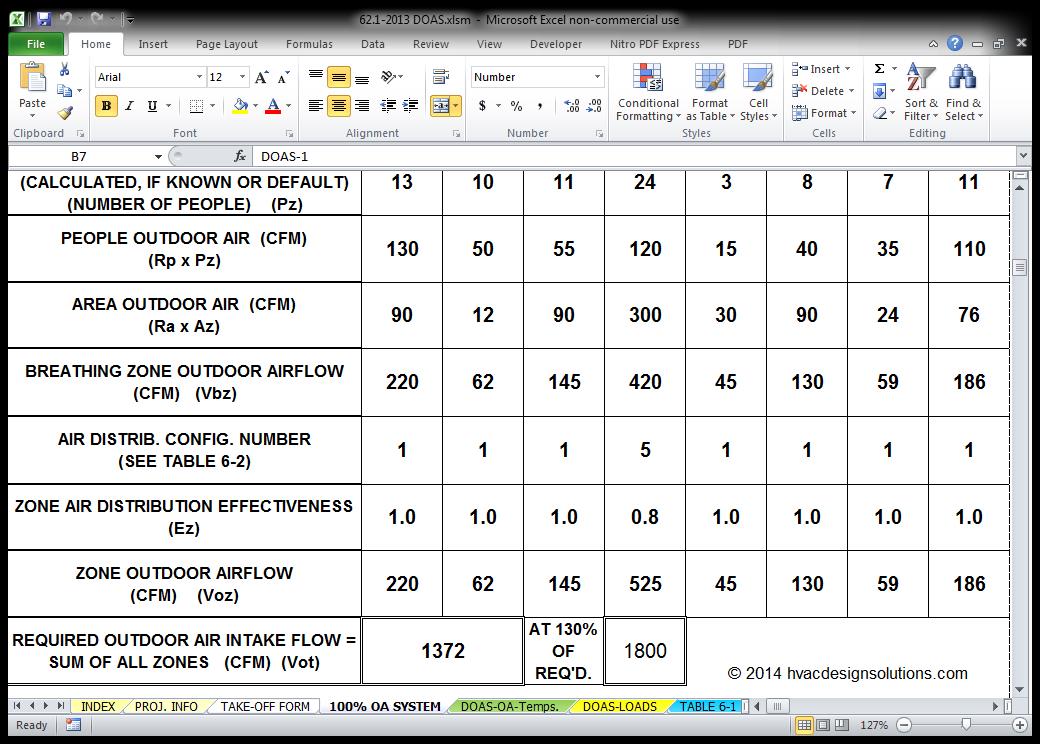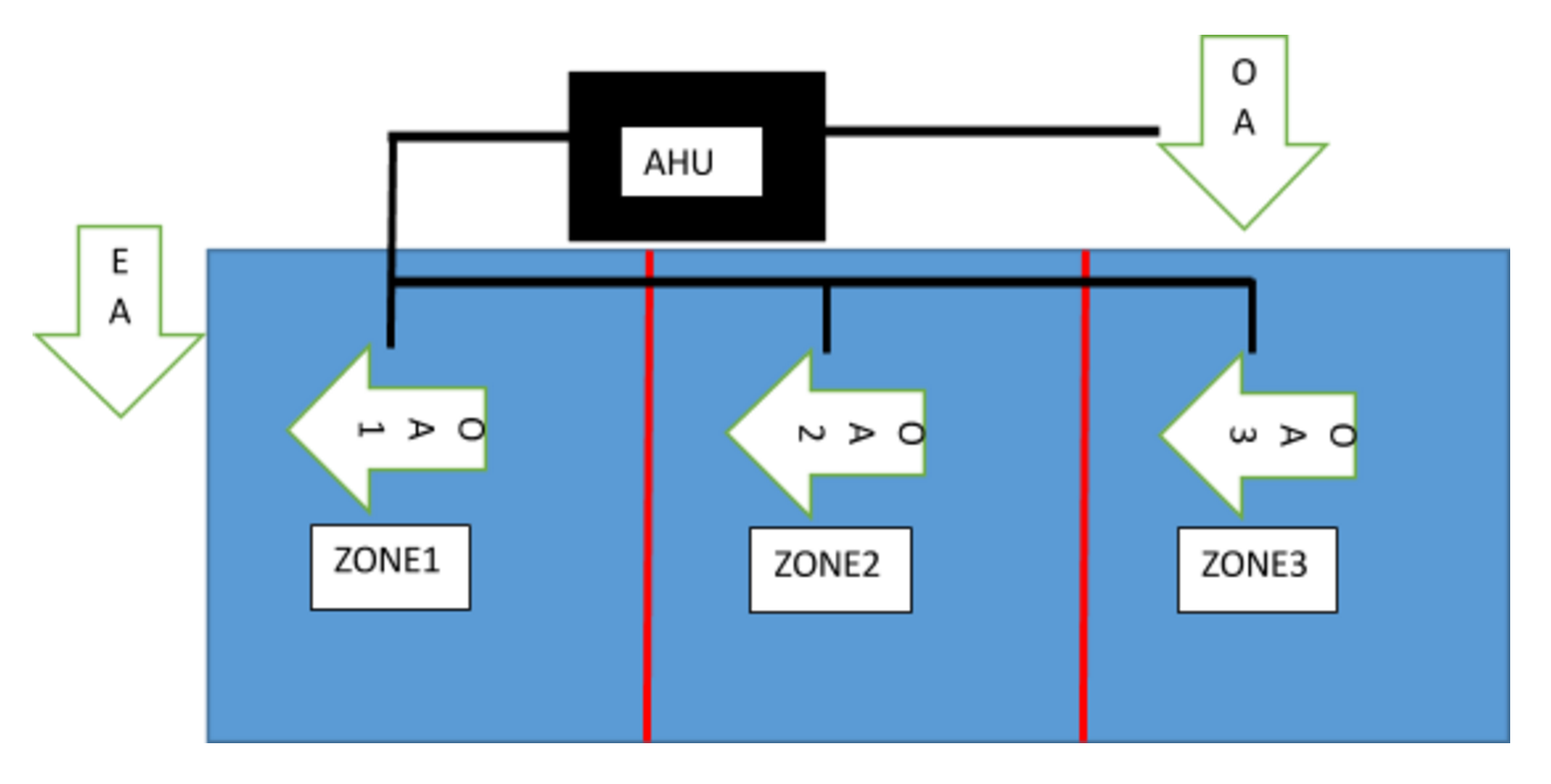
- #BREATHING ZONE OUTDOOR AIRFLOW EQUATION ASHRAE CODE#
- #BREATHING ZONE OUTDOOR AIRFLOW EQUATION ASHRAE PROFESSIONAL#
Over the next two decades, emerging concern and knowledge regarding VOCs, radon, and other indoor air quality factors prompted the industry to adjust the minimum rates upward. In response the energy crises of the 1970s, the pendulum swung too far and the minimum rate was cut back to 5 cfm per person-just as the industry started building much more airtight buildings.
#BREATHING ZONE OUTDOOR AIRFLOW EQUATION ASHRAE CODE#
In order to keep CO 2 levels at an acceptably low level, 15 cfm per occupant was adopted in the American Standards Association code in 1946.
#BREATHING ZONE OUTDOOR AIRFLOW EQUATION ASHRAE PROFESSIONAL#
The professional community eventually tapered back the minimum ventilation rate. Over the next several decades, hygiene improved and our high ventilation rates came into question yet soon thereafter, carbon dioxide (CO 2) became a measurable proxy associated with poor health effects at high concentrations.

In response, the American Society of Heating and Ventilation Engineers (ASHVE) accepted a minimum ventilation rate of 29 cfm per occupant.

BuildingGreen did some good legwork on this issue a few years ago and cited that doctors during the Crimean War (1853–1855) observed that diseases spread faster in densely occupied hospitals with poor ventilation. But what is the base minimum that we need to provide per person? Our standard minimum ventilation rates have varied drastically over time. We know that increased amounts of clean, fresh air is a good thing. Auditorium seating area = 750 cfm of ventilation (5 cfm/person x 150 persons)Ī Brief History of Minimum Ventilation Rates.Office = 85 cfm of ventilation (17 cfm/person x 5 persons).Therefore, for a 1,000-square-foot space: Auditorium seating area = 150 people per 1,000-square feet.Office = 5 people per 1,000-square-feet.But it is the density factor related to the occupancy type that responds to this need: This lower rate might seem counterintuitive at first because a densely occupied area needs more ventilation. Office spaces require 17 cfm/person however, an auditorium seating area only requires 5 cfm/person. Occupant density is also influenced by occupancy type and plays an important factor in the overall amount of ventilation air needed in a space ( Figure 1). For example, museums/galleries require a minimum combined outdoor air rate of 9 cfm/person, while animal areas in pet shops or weight rooms in health clubs require no less than 26 cfm/person. Most HVAC systems will recirculate some component of indoor air (filtered and reconditioned).Īn examination of the minimum combined outdoor air rates from Standard 62.1 reveals that ventilation requirements vary based on occupancy type - which impacts expected activity level (think heavy breathing and perspiration) and the potential for indoor pollution sources. It is important to acknowledge that we are referring to outdoor air specifically. For our purposes, we will measure the delivery of outdoor air in cubic feet per minute per person (cfm/person) based on the combined outdoor air rate. Thus, ASHRAE offers a combined outdoor air rate to simplify matters. If both sources are present and both (for example) produce perceivable odors, then the ventilation rate required for adequate dilution is the sum of the rates needed to handle each source separately. Sources originating from the building and its furnishings: response in cfm/sf.Sources originating from occupants and their activities: response in cfm/person.

This because ASHRAE considers two types of contaminant sources, either of which may be present in an indoor environment: offices, museums, supermarkets, and so on). Next, let's define the ventilation rate. ASHRAE Standard 62.1 specifies ventilation rates based on cubic feet per minute (cfm) per person and per square-foot of floor area - and both are related to the occupancy type (e.g. Ventilation Rate (Combined Outdoor Air Rate)


 0 kommentar(er)
0 kommentar(er)
